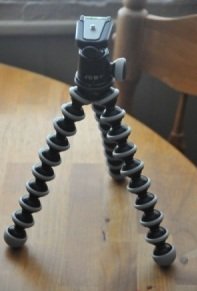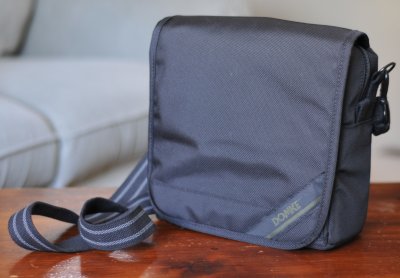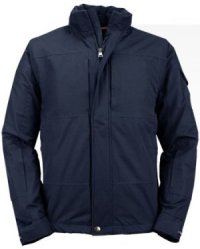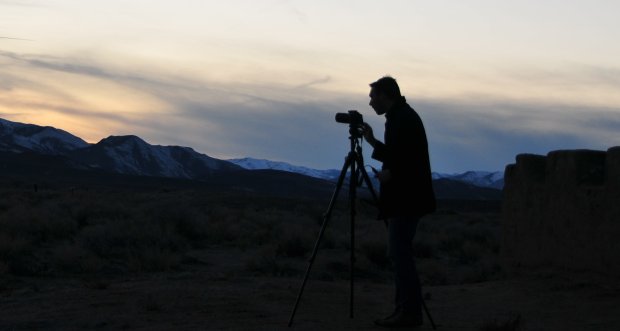Now that winter is drawing to a close in most of the country (it’s still snowing here in the Sierra Nevadas), it’s time to think about getting out and taking more pictures. As a photography enthusiast, I know there’s a few things that I consider critical whenever I’m out shooting, things are I don’t leave home without.
 Tripod: If you are concerned about taking tack sharp pictures, don’t trust the vibration reduction on your lens. Personally, I use a travel sized tripod (like the GorillaPod, or an Ultrapod). Now, some would recommend a larger size tripod, but in my experience there’s a few draw backs. First off, unless you go with carbon fiber and spend upwards of around $300 (for a good one), you’re going to end up packing around something heavy. Second, it’s not always possible to just spread out the legs of a tripod wherever you like. I’ve found that a mini-tripod is much lighter, and more useful in most cases than a full size tripod.
Tripod: If you are concerned about taking tack sharp pictures, don’t trust the vibration reduction on your lens. Personally, I use a travel sized tripod (like the GorillaPod, or an Ultrapod). Now, some would recommend a larger size tripod, but in my experience there’s a few draw backs. First off, unless you go with carbon fiber and spend upwards of around $300 (for a good one), you’re going to end up packing around something heavy. Second, it’s not always possible to just spread out the legs of a tripod wherever you like. I’ve found that a mini-tripod is much lighter, and more useful in most cases than a full size tripod.
Strap: The best camera strap I’ve ever found is the Black Rapid R-Strap. I learned the hard way not to depend on the factory strap, and getting my camera off from around my neck was one of the best things I ever did. Black Rapid has also improved the attachment system between the strap and the camera so you don’t need to depend on a small piece of plastic to keep your camera secure anymore.
Bag: Being outside, you need to travel light. The best way to carry your gear (like that tripod, or extra lenses) is in a camera bag. Since you’re going to be outside shooting, I’d say travel light and go with something like the Domke J-5XC. I had a chance to try one out recently, and I found that it’s the ideal size for shooting in the outdoors. It’s also got the best strap I’ve ever seen on a camera bag. The J-5XC is one of Domke’s smaller bags, but you want to travel light when you’re shooting outdoors. I recommend a shoulder bag because in my experience, a backpack is more of a pain in the butt than it’s worth. You have to try and find somewhere to put everything down, remove the backpack, get at your gear, put the pack back on, etc. With a shoulder bag it’s easy access, and I’ve actually rested my camera on my gear bag more than once in order to stabilize for a shot.
 Storage: I prefer to bring my netbook with me, but there are other storage solutions out there. Regardless of what you use, it’s a good idea to backup your pictures off of your memory card at the end of the day. You never know when your card is going to be corrupted, stolen, or just plain lost. If I’m shooting at multiple locations (say in Yosemite, for example) I’ll back up my shots after coming back to the car. It’s a shame to go on that once in a lifetime trip, and lose everything. It just makes sense to back up, particularly if you are on an extended shoot lasting multiple days. For me, a netbook serves dual purposes, so it’s the ideal solution. If you’re looking for something lighter than a netbook, you might also want check out some of the portable camera backup systems available on the market. Be aware however, that these devices can cost as much as a netbook for the same amount of storage.
Storage: I prefer to bring my netbook with me, but there are other storage solutions out there. Regardless of what you use, it’s a good idea to backup your pictures off of your memory card at the end of the day. You never know when your card is going to be corrupted, stolen, or just plain lost. If I’m shooting at multiple locations (say in Yosemite, for example) I’ll back up my shots after coming back to the car. It’s a shame to go on that once in a lifetime trip, and lose everything. It just makes sense to back up, particularly if you are on an extended shoot lasting multiple days. For me, a netbook serves dual purposes, so it’s the ideal solution. If you’re looking for something lighter than a netbook, you might also want check out some of the portable camera backup systems available on the market. Be aware however, that these devices can cost as much as a netbook for the same amount of storage.
 Incidental Gear: There’s a few things your should carry just for general purposes. Personally, I wear a Suunto Core Light Black (because it warns of inclement weather, and also tells you the sunrise and sunset times), I always carry a multi-tool (like the Leatherman Skeletool), and I shove all my other stuff (like cellphone, wallet, GPS, etc.) in my Evolution Travel jacket.
Incidental Gear: There’s a few things your should carry just for general purposes. Personally, I wear a Suunto Core Light Black (because it warns of inclement weather, and also tells you the sunrise and sunset times), I always carry a multi-tool (like the Leatherman Skeletool), and I shove all my other stuff (like cellphone, wallet, GPS, etc.) in my Evolution Travel jacket.
Of course, the biggest thing is to get out there. You can’t take pictures of that sunset if you are at home sitting on the couch, and you’ll never get that great sunrise shot if you are still in bed. It doesn’t matter what camera you use, what matters is that you have a camera with you.
So what gear do you carry? What do you consider to be essential for when you leave the house?
